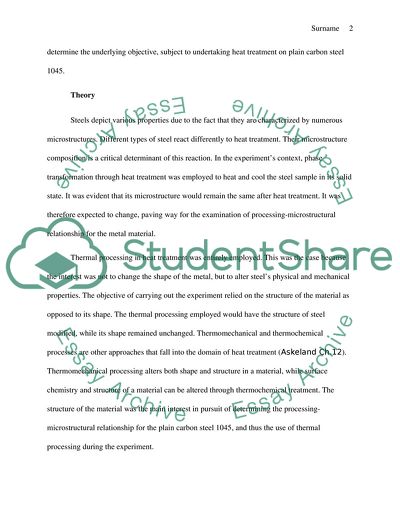Heat Treatment of Steel Lab Report Example | Topics and Well Written Essays - 500 words. https://studentshare.org/physics/1774790-heat-treatment-of-steel-lab-report-only-introduction-and-theory
Heat Treatment of Steel Lab Report Example | Topics and Well Written Essays - 500 Words. https://studentshare.org/physics/1774790-heat-treatment-of-steel-lab-report-only-introduction-and-theory.


